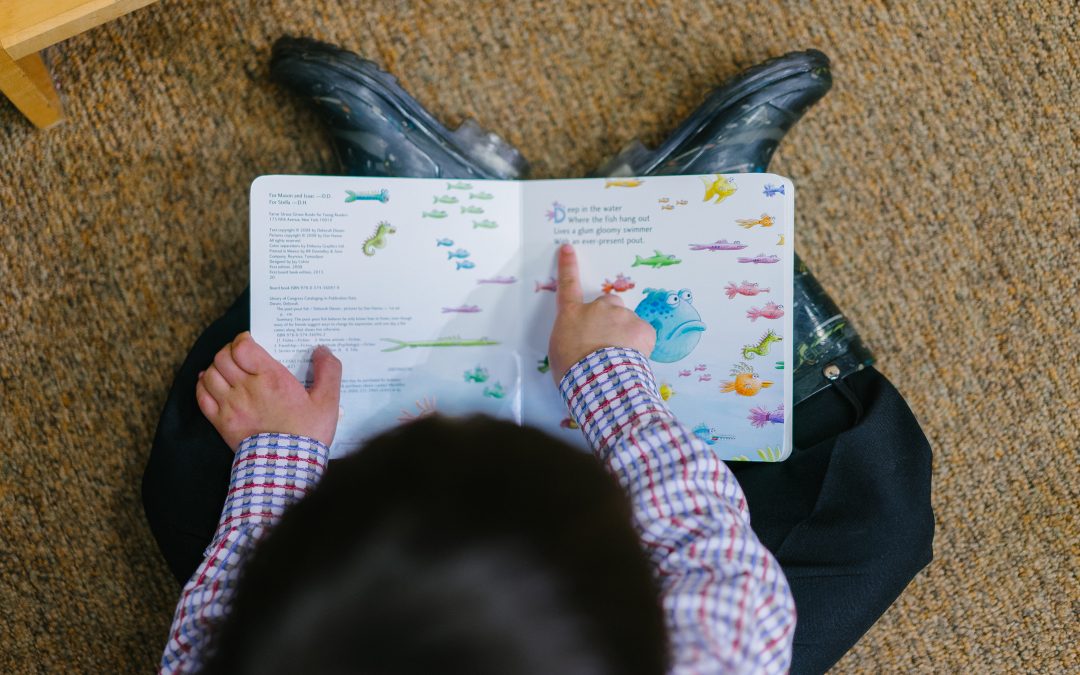Before learning to read, children are first exposed to sounds. One engaging way to support their journey to phonemic awareness is through learning rhymes. Children learning rhymes are exposed to sounds that make up words, which help them identify and understand word parts better. It also helps the brain learn about syllable structure.
Rhyming is part of a larger process whereby babies begin to learn internal word structure; and rather than learning “whole words”, babies can then acquire vocabulary words much faster by recognizing “parts” of words. The word “mat”, for instance, helps them identify and acquire other words with the same sounds like “cat”, “rat”, and “bat”. Later in development, learning to recognize rhyming words fosters development of the skill to generate rhyming words, a marker of phonological awareness development.
Rhyming is a stepping-stone in sound awareness development. While children don’t typically use the skill of rhyming to read and spell, it does have predictive power: children that can recognize and generate rhyming words prior to Kindergarten entry show better reading skills and outcomes in grade one and beyond. Rhyming is an easily assessable skill that allows us to “check in” on phonological development. It us usually fairly easy to teach as well.
1 – Invest in rhyming books
The best way to begin their rhyming word journey is through investing in rhyming books. These are likely designed with colourful photos and eye-catching details, making reading time fun and exciting. Shoot for an interactive reading session with your child daily.
Building it into a fun routine not only helps your child build rhyming skills but also teaches them about the importance of discipline, and it also serves as a little bonding time.
2 – Repetition is key
There’s a reason why children reach for the same toys every day or watch the same movies a dozen times. They enjoy repetition, and the same logic applies to their favourite books. As you plan out your rhyming sessions, recognize the importance of repetition in the learning process.
They’ll likely leach for the same rhyme book over and over to read it again, so encourage them. If anything, play nursery rhymes on repeat all day long! Remember: Repetition plays a key role in their development.
3 – Keep it fun and lively
Repetition will eventually render your child able to identify rhyming words from her favourite books and nursery rhymes, so begin the next stage of the learning process by introducing games. This helps them widen their vocabulary, as they’re able to learn new words.
Play “I Spy” something that rhymes with “hat”; make dinner time fun by changing the first sound in words (“pass the poodles; I need a stork). Don’t be afraid to play around with “nonsense” or made-up words when rhyming. Sing songs that play on rhymes, such “willaby wallaby” or that Hannah banana fo fee-fi-fo-fanah song. Get the family together and play hot potato and pass something around, saying a rhyming word each time. If you get stuck, you are out! (e.g., cat-hat-mat-bat-sat …).
Don’t Be Afraid to Ask for Help
As you introduce rhyming to your child, remember that it’s a skill that will naturally emerge over time. Skills need ample time to be honed and in a developing mind, you will need to gather patience, determination, and sheer creativity. If you find that your child has persistent difficulties with rhymes, however, never hesitate to reach out for help. Most children can recognize rhymes quite easily after a little exposure; generating their own rhyming words is a little harder.
Professionals will be more than willing to identify the root cause of your concerns, along with the best ways to approach phonological processing development. Every child is different and while techniques generally work, some children need special care and attention to help them blossom.
For reading programs in Calgary, Speak2Read is a speech and language center that is committed to helping children overcome various difficulties tied to reading and writing. Reach out to us today to see how we can help you!

